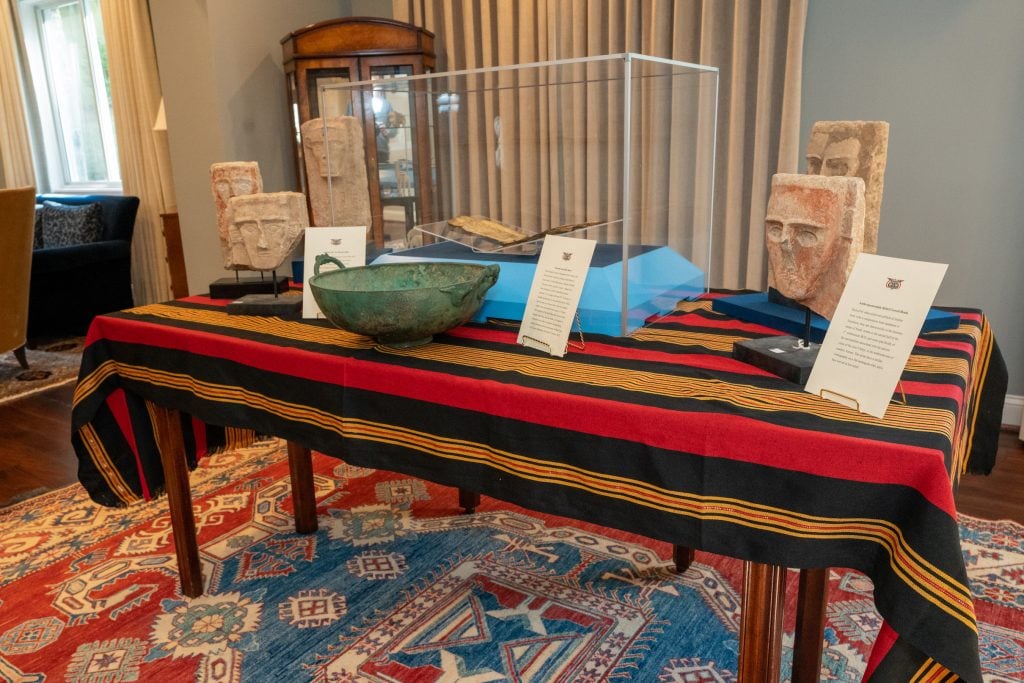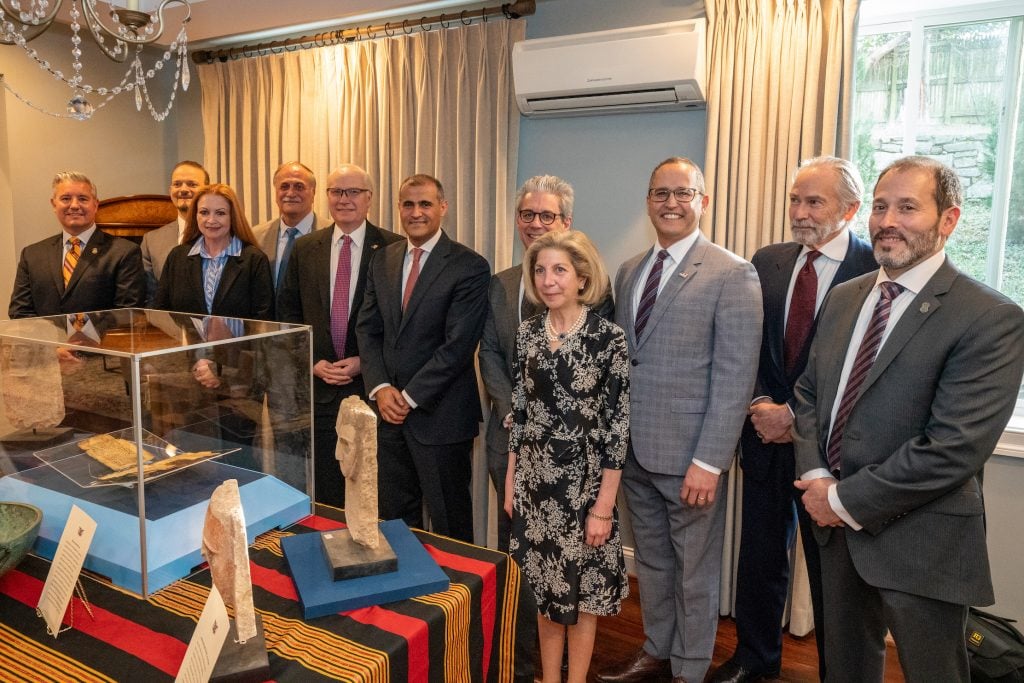Museums & Institutions
The National Museum of Asian Art Will Hold Onto Looted Artifacts Intended to Return to Yemen to Protect Them From Conflict
The two-year agreement can be renewed at the request of the Yemeni government.

The two-year agreement can be renewed at the request of the Yemeni government.

Sarah Cascone

For the next two years, a cache of 77 looted Yemeni artifacts will head to the Smithsonian’s National Museum of Asian Art in Washington, D.C., as part of an agreement to look after the works until they can be safely repatriated to the war-torn country.
“With the current situation in Yemen, it is not the right time to bring the objects back into the country,” Mohammed Al-Hadhrami, the ambassador of the Republic of Yemen to the United States said in a statement. “The Smithsonian’s National Museum of Asian Art is a global leader in the field of cultural heritage and preservation. We are pleased to see these objects in their care.”
The U.S. hasn’t repatriated cultural property to Yemen since 2004, when it returned a single funerary stele to the Yemeni embassy. But the looting and destruction of the nation’s antiquities has been a major problem in Yemen during its ongoing civil war, which began in 2014.
A November report from Yemen’s Al-Hudhud Center for Archaeological Studies found that 4,000 Yemeni artifacts had been smuggled abroad. UNESCO added landmarks from Yemen’s ancient kingdom of Saba to the list of at-risk World Heritage sites last month.

Repatriation ceremony hosted by the Embassy of the Republic of Yemen Government in Washington, D.C. Photo by Robert Harrell, courtesy of the National Museum of Asian Art, Smithsonian Institution.
Because of the conflict, the Yemeni embassy and the U.S. Department of State approached the National Museum of Asian Art last month to see if the institution would assist with the storage and care of the artifacts by entering into a two-year custodial agreement. The arrangement can also be renewed at the request of the Republic of Yemen Government.
“Our conservators and our curators have been active in this space for a long time,” museum director Chase Robinson told the Washington Post. “We very quickly realized that this is something that we not only felt compelled to do, but in some sense privileged to do.”
The museum will study and display the collection in an effort to educate the public about ancient Yemeni art. That could include adding works to the current exhibition “Ancient Yemen: Incense, Art, and Trade.”
The institution also plans to enter into a dialogue with the Yemeni community as it draws up the object labels for the works, to best interpret the objects. The text will provide information about the Yemeni civil war, and how the artifacts made their way to the museum.
The arrangement comes after the first change to the Smithsonian’s collections management policy since 2001, authorizing the shared ownership of works in museum collection as well as the return of artifacts for ethical reasons.
The Embassy of the Republic of Yemen Government in Washington, D.C., hosted a repatriation ceremony with officials from the U.S. Department of Homeland Security, the U.S. Department of State and the U.S. Department of Justice on Tuesday.
The U.S. Department of Homeland Security Investigations and the U.S. Attorney’s Office for the Eastern District of New York seized 64 stone funerary stelae following an investigation. All but one of those were connected to the criminal case against smuggler Mousa “Morris” Khouli, who pleaded guilty in April 2012.
The U.S. Department of Homeland Security’s Customs and Border Protection and the U.S. Department of Justice intercepted the other 13 artifacts while they were being illegally transported into the country.
Among the restituted antiquities were a third-century bronze bowl and 11 folios from an eighth-century Qur’an. The Customs and Border Protection officers seized some manuscripts at the Philadelphia International Airport, while others were confiscated during a sting operation in an online sale.